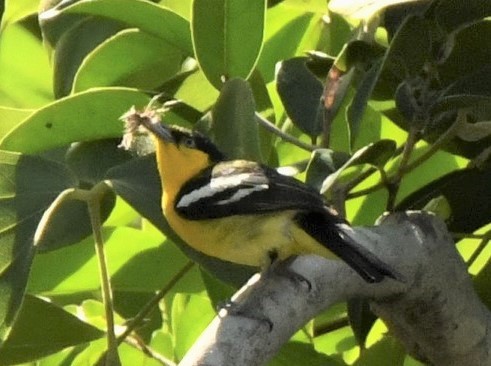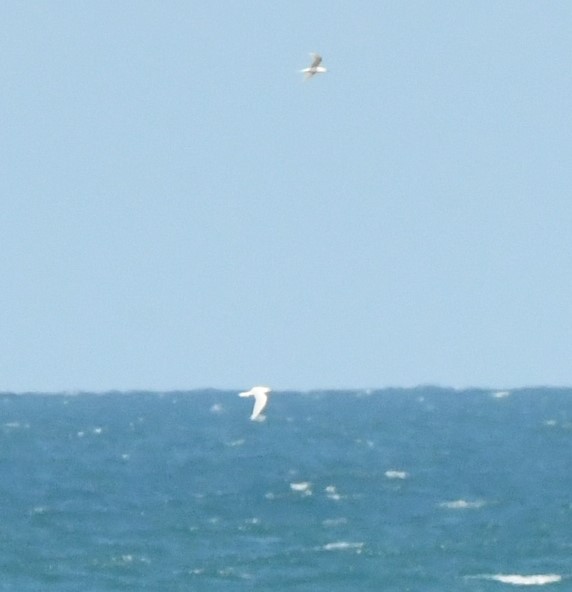
CON SON ISLAND, CON DAO ARCHIPLELAGO, VIETNAM 16 – 22 JUNE 2019
Callyn Yorke

A forty-minute, 230 km flight from Ho Chi Minh City (Saigon) brought about fifty passengers, including Da Thao and I, to the tiny Co Ong airport in the northeast section of Con Son, the largest island in the Con Dao archipelago. The flight was smooth and uneventful, until our approach for landing. A rapid, visceral descent, followed by a teetering leveling-off, and all we could see from the window was water speeding by below us. Suddenly a beach appeared and two seconds later we were on the ground, braking hard on what appeared to be an old road next to a playing field. Actually, this was about the only flat spot on the island large enough to accommodate commercial aircraft. If a landing couldn’t be made due to bad weather, the next closest airfield was Saigon.

An airport shuttle van brought us to the Con Dao Resort at the south end of Con Dao town, where we would be staying for seven nights.

This was a government run, three-star hotel, with upper-level rooms featuring ocean views. We were assigned to Room 226, which had a balcony with a splendid view of Con Son Bay (header photo). The total cost of our booking (breakfast included) was about $1,100 US. The resort grounds featured a pool and sandy beach, and was within walking distance to the town shops and restaurants. We chose to rent a couple of motorbikes for $7 each per day.

Paved roads on Con Son were in good condition and with very light traffic. Getting around by motorbike was efficient and enjoyable, at least until thunderstorms arrived with a bang, which was almost every afternoon. We took morning trips to explore the National Park and several coastal areas featuring natural habitat that appeared suitable for wildlife.

I had greatly anticipated scuba diving here (Con Dao reportedly has the best diving in Vietnam), and I had brought a large bag of dive gear. However, we soon learned from an Aussie dive instructor (one dive shop still operates on the island) that the Coast Guard had recently banned all water recreational activity indefinitely due to rough seas.

Our birding trips included two visits to Con Dao National Park. This area has perhaps the best preserved forest on the island and appeared to be the most likely place to find the elusive Nicobar Pigeon. After signing in and paying the park fees, we hiked up a slippery stone walkway about 100 m, through a closed-canopy broad leaf deciduous forest.

There was a signed trail junction; one direction led a short ways upstairs to a cave with a shrine. This was a popular place, often crowded with visitors by 8 am. The other trail led to Ong Dung Beach on the north side of the island.

This lengthy trail passed through hills covered by mature secondary forest, including pleasant little stream crossings. Unfortunately, bird photography was everywhere difficult due to the dense foliage. Birds were vocal at the trailhead, shrine, and for about 200 m along the Ong Dung Beach trail. Species noted included, Stripe-throated Bulbul, Pin-striped Tit-babbler, White-rumped Shama and Dark-necked Tailorbird, all of which were fairly common elsewhere on the island. We found no sign of Nicobar Pigeon anywhere on the island.

Two additional trips were made to the Ben Dam Bay area in western part of the island. There we found two bird species of particular note, Common White Tern (evidently, no other recent records of occurrence in Vietnam) and a very distinctive Cambodian subspecies of Common Iora, males of the latter form having a black cap (see images and annotated species list below).

Near the end of our stay on the island, I made a motorbike trip on the airport road, stopping a few times to bird forest patches bordering Dat Doc Beach. There I found three new birds for our island trip list, Green-billed Malkoa, Pied Hornbill and Greater Racquet-tailed Drongo. Since all three of those species (and others, e.g. White-rumped Shama) are non-migratory forest-dwelling birds, their occurrence on the Con Son island, about 100 km from the mainland, was rather surprising. Might they represent distinct subspecies of their mainland counterparts?

For scientists and naturalists, the Con Dao archipelago is a showcase of speciation. A combination of factors such as distance from the mainland, food availability, and a long period of genetic isolation, can produce distinctive morphology and behavior in populations of otherwise common mainland species (e.g. the unique faunas of Madagascar and the Galapagos Islands). How populations managed to colonize this distant island chain, remains an open question.
A relatively large number endemic animals live on the Con Dao islands, including a unique subspecies of Pin Striped Tit-babbler, which was vocal near the trailhead of the National Park, though too shy and retiring for me to capture a photo of it. Among reptiles, there are at least five endemic species, including a Bent-toed Gecko (Cyrtodactylus spp.) on the islands. Several of these lizards were found among the boulders bordering the Ong Dung Beach trail (photo). Most likely, further field and lab studies will reveal the presence of additional endemic species on these islands.

For most visitors , the main attraction is the Con Dao Prison complex, built by the French in 1861. Da Thao and I visited this gloomy place one sweltering afternoon. The historical site includes an informative museum with numerous gruesome exhibits illustrating the horribly inhumane conditions that tens of thousands of inmates, (mostly Vietnamese political prisoners of the French colonialists, followed by the government of South Vietnam during the American war) were subjected to over a time period of more than a century.

Wandering through the bleak, concrete cell blocks and dioramas with life-sized prisoner manikins, we could appreciate that the nickname, “Devil’s Island of Indochina,” was no exaggeration. When USA Congressional aide Tom Harkin, visited Con Dao prison in July of 1970, his photographs were subsequently published in Life Magazine. For the first time the prison’s lengthy history of dark deeds, e.g. ‘Tiger Cages,’ appeared in the international spotlight. By 1975 the prison had been permanently closed and designated an historical landmark. Nowadays, thousands of Vietnamese pilgrims visit the prison each year to leave offerings for the remains of some of the more recent victims (including prominent Vietnamese national leaders) in the Con Dao graveyard.

Da Thao quietly slipped out of the hotel one evening after dark to join a group of gravesite mourners. About the singular experience, she later said, tearfully, “Many people were there.”

ANNOTATED CHECKLIST OF CON SON, CON DAO JUNE 16-22 2019 Callyn Yorke
KEY
Locations: Ben Dam Bay, including roadside scrub and forest, shore, harbor and offshore waters (BDB); Con Dao National Park, including trailhead, shrine trail and Ong Dung Beach Trail (CDNP); Con Dao Resort, gardens, trees, shore, adjacent beach scrub (CDR); Con Dao Town, including ruderal lots, ornamental trees, shore and breakwater (CDT); Con Son Bay, including shore and roadside patches of coastal scrub and forest (CSB).
Abundance: Numbers, 1,2,3… following each species entry represent the maximum number of individuals seen during any one survey.
Frequency: Common (C) = seen on all or most days; Uncommon (U) = not found every day but seen at least twice; Rare (R) = seen only once.
Biology Sex (m,f); Age – if known, Adult (ad), immature (imm); plumage – basic (bsc. plmg.), alternate (alt. plmg.).
BIRDS NOTED
- Eastern Spotted Dove (Spilopelia chinensis) 2 BDB (U).
- Pied Imperial Pigeon (Ducula bicolor) 3 often seen flying over forest, BDB, CDNP, CSB (C).
- Germain’s Swiflet (Aerodramus germani) 6 , gregarious, ubiquitous (C).
- Green-billed Malkoa (Phaenicophaeus tristis) 1 CSB (R).
- Western Koel (Eudynamys scolopaceus) 1 middle level of forest near trailhead, CDNP.
- Little Egret (Egretta garzetta) 2 BDB (U).
- Common White Tern (Gygis alba) 2 a pair flying offshore then landing on a rocks on a small islet; all white plumage and small black bill seen clearly with a 10 x 42 binocular at about 200 m from shore, photographed with a Nikon D850 and 200-500 mm lens (photo) BDB (R).
- Roseate Tern (Sterna dougallii) 2 individuals flying low, plunge diving in CSB, (C)
- White-bellied Sea Eagle (Haliaeetus lecogaster) 1 soaring high above shoreline of CSB and adjacent hills, (U).
- Oriental Pied Hornbill (Anthracoceros albirostris) 1 flew across roadway and into dense second-growth, CSB (R).
- Common Iora (Aegithina tiphia cambodiana) 3 gregarious, 1 m with black cap (photo) with 2 f, in tall, roadside second-growth, BDB (U).
- Greater Racquet-tailed Drongo (Dicrurus paradiseus) 2 gregarious, vocal possibly nesting in roadside trees, CSB (R).
- Dark-necked Tailorbird (Orthotomus atrogularis) 10 ubiquitous, vocal, lower level to subcanopy of roadside trees (C).
- Stripe-throated Bulbul (Pycnonotus finlaysoni) 6 vocal, gregarious, ubiquitous in dense vegetation (C).
- White-eyes (Zosterops sp. c.f. palpebrosus) 3 gregarious in flowering ornamental shrubs and adjacent trees, CDR, CDT (U).
- Pin-striped Tit-babbler (Mixornis gularis condorensis) 4 highly vocal, shy and difficult to observe in middle to lower level of forest, CDNP (C).
- White-rumped Shama (Kittacincla malabarica macroura) 3 (m,f) vocal, pairs active forest lower and upper middle levels and dense roadside scrub, CNDP, BDB (C).
- Scaly-breasted Munia (Lonchura nisoria) 2 (m,f) in weedy, vacant lot with EUTS, CDT (U).
- Plain-backed Sparrow (Passer flaveolus) 2 (m, f) foraging on ground in weedy vacant lot with EUTS and SBMU, CDT (R).
- Eurasian Tree Sparrow (Passer montanus) 20 (m,f) weedy areas, gardens in and around town, CDR, CDT (C).